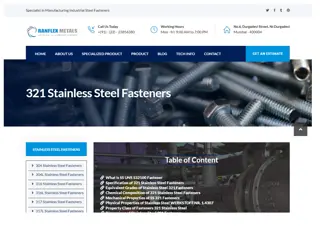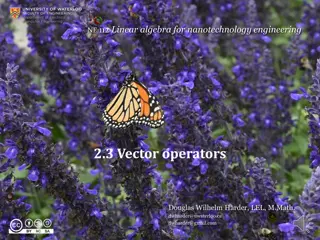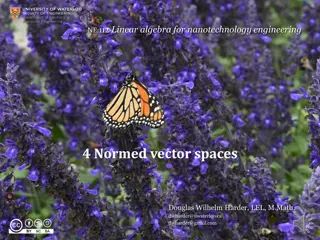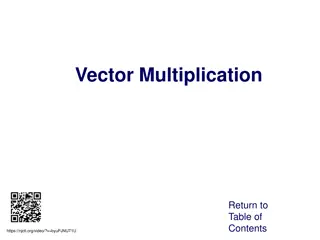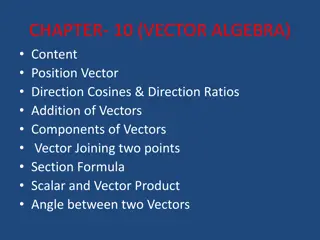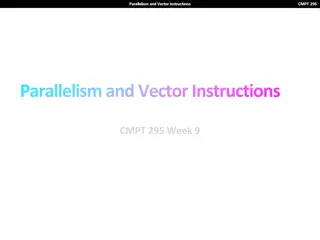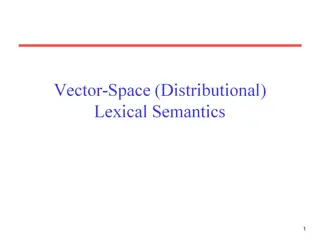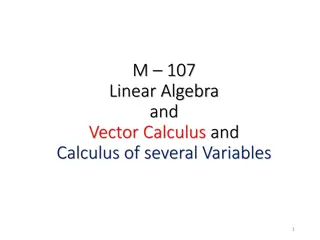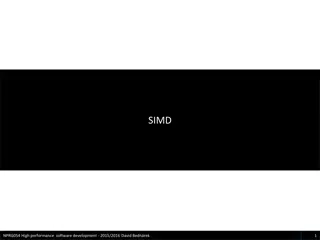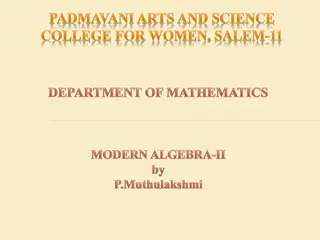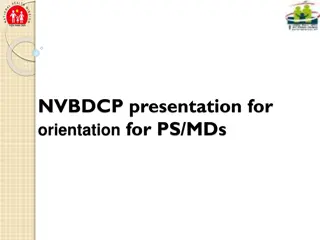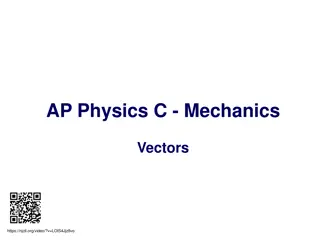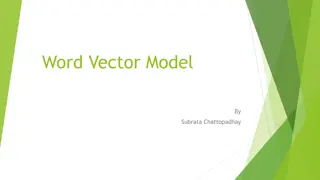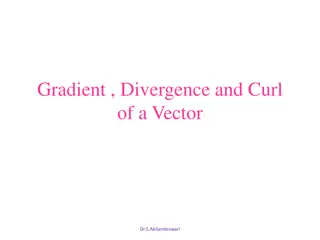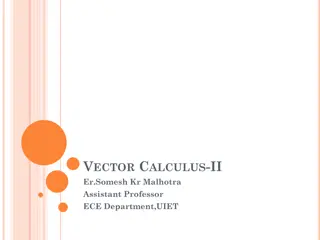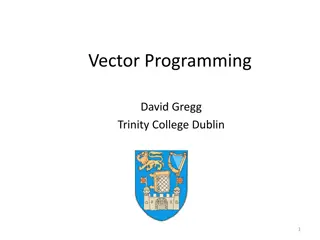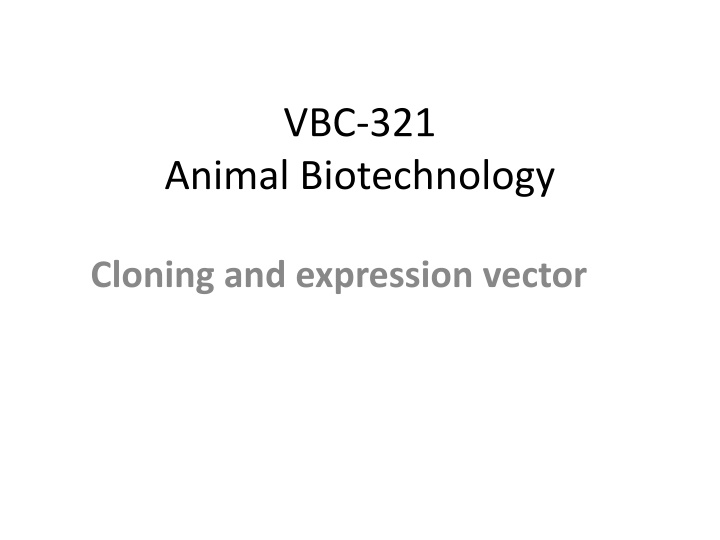
Cloning Vectors and Plasmids in Biotechnology
Explore the world of cloning vectors and plasmids used in biotechnology, including their common properties, types, and functions. Learn about plasmid vectors, selective markers, origins of replication, and the importance of multiple cloning sites in efficient molecular cloning processes.
Download Presentation

Please find below an Image/Link to download the presentation.
The content on the website is provided AS IS for your information and personal use only. It may not be sold, licensed, or shared on other websites without obtaining consent from the author. If you encounter any issues during the download, it is possible that the publisher has removed the file from their server.
You are allowed to download the files provided on this website for personal or commercial use, subject to the condition that they are used lawfully. All files are the property of their respective owners.
The content on the website is provided AS IS for your information and personal use only. It may not be sold, licensed, or shared on other websites without obtaining consent from the author.
E N D
Presentation Transcript
VBC-321 Animal Biotechnology Cloning and expression vector
Vector Cloning predominantly for efficient molecular cloning Expression Vector- A Vector that is used for expressing a gene contained within the cloned DNA Vector- A Vector that is used
CLONING VECTORS Cloning vectors share four common properties: 1. Ability to promote autonomous replication 2. Contain a genetic marker (usually dominant) for selection 3. Unique restriction sites to facilitate cloning of insert DNA 4. Minimum amount of nonessential DNA to optimize cloning
Types of cloning vector Plasmid Bacteriophage Lambda Cosmid M13 Phagemid P1- derived Artificial Chromosome (PAC) Bacterial Artificial Chromosome (BAC) Yeast Artificial Chromosome (YAC) Human Artificial Chromosome (HAC)
PLASMIDS Bacterial cells may contain extra- chromosomal DNA called plasmids. Plasmids are usually represented by small, circular DNA. Some plasmids are present in multiple copies in the cell
PLASMID VECTORS Plasmid vectors are 1.2 3kb and contain: replication origin (ORI) sequence a gene that permits selection, Here the selective gene is ampr; it encodes the enzyme b-lactamase, which inactivates ampicillin. Exogenous DNA can be inserted into the bracketed region .
SELECTIVE MARKER Selective marker is required for maintenance of plasmid in the cell. Because of the presence of the selective marker the plasmid becomes useful for the cell. Under the selective conditions, only cells that contain plasmids with selectable marker can survive Genes that confer resistance to various antibiotics are used. Genes that make cells resistant to ampicillin, neomycin, or chloramphenicol are used
ORIGIN OF REPLICATION Origin of replication is a DNA segment recognized by the cellular DNA- replication enzymes. Without replication origin, DNA cannot be replicated in the cell.
MULTIPLE CLONING SITE Many cloning vectors contain a multiple cloning site or polylinker: a DNA segment with several unique sites for restriction endo- nucleases located next to each other Restriction sites of the polylinker are not present anywhere else in the plasmid. Cutting plasmids with one of the restriction enzymes that recognize a site in the polylinker does not disrupt any of the essential features of the vector
MULTIPLE CLONING SITE Gene to be cloned can be introduced into the cloning vector at one of the restriction sites present in the polylinker
COSMID VECTOR Purpose: 1. Clone large inserts of DNA: size ~ 45 kb Features: Cosmids are Plasmids with one or two Lambda Cos sites. Presence of the Cos site permits in vitro packaging of cosmid DNA into Lambda particles
COSMID VECTOR Thus, have some advantages of Lambda as Cloning Vehicle: Strong selection for cloning of large inserts Infection process rather than transformation for entry of chimeric DNA into E. coli host Maintain Cosmids as phage particles in solution But Cosmids are Plasmids: Thus do NOT form plaques but rather cloning proceeds via E. coli colony formation
Yeast Artificial Chromosomes Purpose: Cloning vehicles that propogate in eukaryotic cell hosts as eukaryotic Chromosomes Clone very large inserts of DNA: 100 kb - 10 Mb Features: YAC cloning vehicles are plasmids Final chimeric DNA is a linear DNA molecule with telomeric ends: Artificial Chromosome
Additional features: Often have a selection for an insert YAC cloning vehicles often have a bacterial origin of DNA replication (ori) and a selection marker for propogation of the YAC through bacteria. The YAC can use both yeast and bacteria as a host
PACs and BACs PACs - P1-derived Artificial Chromosomes E. coli bacteriophage P1 is similar to phage lambda in that it can exist in E. coli in a prophage state. Exists in the E. coli cell as a plasmid, NOT integrated into the E. coli chromosome. P1 cloning vehicles have been constructed that permit cloning of large DNA fragments- few hundred kb of DNA Cloning and propogation of the chimeric DNA as a P1 plasmid inside E. coli cells BACs - Bacterial Artificial Chromosomes These chimeric DNA molecules use a naturally- occurring low-copy number bacterial plasmid origin of replication, such as that of F-plasmid in E. coli. Can be cloned as a plasmid in a bacterial host, and its natural stability generally permits cloning of large pieces of insert DNA, i.e. up to a few hundred kb of DNA.
RETROVIRAL VECTORS Retroviral vectors are used to introduce new or altered genes into the genomes of human and animal cells. Retroviruses are RNA viruses. The viral RNA is converted into DNA by the viral reverse transcriptase and then is efficiently integrated into the host genome Any foreign or mutated host gene introduced into the retroviral genome will be integrated into the host chromosome and can reside there practically indefinitely. Retroviral vectors are widely used to study oncogenes and other human genes.
Types of expression systems Bacterial: plasmids, phages Yeast: expression vectors: plasmids, yeast artifical chromosomes (YACs) Insect cells: baculovirus, plasmids Mammalian: viral expression vectors (gene therapy): SV40 vaccinia virus adenovirus retrovirus
EXPRESSION VECTORS Allows a cloned segment of DNA to be translated into protein inside a bacterial or eukaryotic cell. Vectors will contain the ff: (a) in vivo promoter (b) Ampicillin selection (c) Sequencing primers
EXPRESSION VECTORS Produces large amounts of a specific protein Permits studies of the structure and function of proteins Can be useful when proteins are rare cellular components or difficult to isolate
Common problems with bacterial expression systems Low expression levels: change promoter change plasmid change cell type add rare tRNAs for rare codons on second plasmid Severe protein degradation: use proteasome inhibitors and other protease inhibitors try induction at lower temperature Missing post-translational modification: co-express with kinases etc. Glycosylation will not be carried out: use yeast or mammalian expression system Misfolded protein (inclusion bodies): co-express with GroEL, a chaperone try refolding buffers
SHUTTLE VECTORS Shuttle vectors can replicate in two different organisms, e.g. bacteria and yeast, or mammalian cells and bacteria. They have the appropriate origins of replication. Hence one can clone a gene in bacteria, maybe modify it or mutate it in bacteria, and test its function by introducing it into yeast or animal cells.

